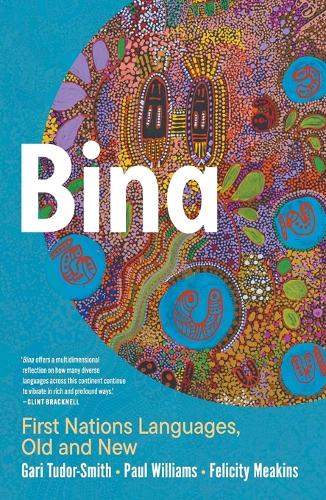
Bina: First Nations Languages, Old and New
(Paperback)
Publishing Details
Bina: First Nations Languages, Old and New
By (Author) Gari Tudor-Smith
By (author) Paul Williams
By (author) Felicity Meakins
Black Inc.
La Trobe University Press
30th July 2024
Australia
Classifications
General
Non Fiction
Indigenous peoples
499.15
Physical Properties
Paperback
368
Width 155mm, Height 233mm, Spine 32mm
537g
Description
The remarkable story of Australia's First Nations Languages, from precolonial times to the present Australia's language diversity is truly breathtaking. This continent lays claim to the world's longest continuous collection of cultures, including over 440 unique languages and many more dialects. Sadly, European invasion has had severe consequences for the vitality of these languages. Amid devastating loss, there has also been the birth of new languages such as Kriol and Yumplatok, both English-based Creoles. Aboriginal English dialects are spoken widely, and recently there has been an inspiring renaissance of First Nations languages, as communities reclaim and renew them. Bina- First Nations Languages Old and New tells this story, from the earliest exchange of words between colonists and First Nations people to today's reclamations. It is a creative and exciting introduction to a vital and dynamic world of language.
Author Bio
Gari Tudor-Smith (Author) Gari Tudor-Smith is a Barada, Yiman, Gangulu and Gureng Gureng linguist. Gari's focus is on language and cultural reclamation and empowering First Nations communities. They are currently working as a linguist at the University of Queensland, contributing to the development of a Graduate Certificate in Indigenous Language Revitalisation and working on legacy language collections. Paul Williams (Author) Paul Williams is a Gamilaraay man from Tamworth, New South Wales. Since 2020, Paul has worked as a linguist at the University of Queensland, where he has contributed to a number of Indigenous language projects including dictionaries and grammars and working with archival materials. Felicity Meakins (Author) Felicity Meakins is a professor of linguistics at the University of Queensland. She has worked for over two decades with Indigenous communities documenting their languages. This work extends beyond the traditional boundaries of linguistic research, such as dictionaries and grammars, to projects grounded in the artistic, cultural and land-based practices of these communities.
